
Bastille Day is the common name given in English-speaking countries to the national day of France, which is celebrated on 14 July each year. In French, it is called the Fête nationale française ; legally it is known as le 14 juillet.

Fox River Grove (FRG) is a village in Algonquin Township, McHenry County and Cuba Township, Lake County, Illinois, United States. As per 2020 census, the population was 4,702. In 1919, the village of Fox River Grove was officially incorporated, becoming the ninth village in McHenry County. The Grove is situated along the southern shore of the Fox River.

Salem is a historic coastal city in Essex County, Massachusetts, United States, located on the North Shore of Greater Boston. Continuous settlement by Europeans began in 1626 with English colonists. Salem was one of the most significant seaports trading commodities in early American history. Prior to the dissolution of county governments in Massachusetts in 1999, it served as one of two county seats for Essex County, alongside Lawrence.

Ellington is a town in Chautauqua County, New York, United States. The population was 1,493 at the 2020 census.

In the United States, trolley parks, which started in the 19th century, were picnic and recreation areas along or at the ends of streetcar lines in most of the larger cities. These were precursors to amusement parks. Trolley parks were often created by the streetcar companies to give people a reason to use their services on weekends.

Independence Day, known colloquially as the Fourth of July, is a federal holiday in the United States which commemorates the ratification of the Declaration of Independence by the Second Continental Congress on July 4, 1776, establishing the United States of America.

Emancipation Day is observed in many former European colonies in the Caribbean and areas of the United States on various dates to commemorate the emancipation of slaves of African descent.

The Kentucky Derby Festival is an annual festival held in Louisville, Kentucky, during the two weeks preceding the first Saturday in May, the day of the Kentucky Derby. The festival, Kentucky's largest single annual event, first ran from 1935 to 1937, and restarted in 1956.
The culture of Boston, Massachusetts, shares many roots with greater New England, including a dialect of the Eastern New England accent popularly known as Boston English. The city has its own unique slang, which has existed for many years. Boston was, and is still, a major destination of Irish immigrants. Irish Americans are a major influence on Boston's politics and religious institutions and consequently on the rest of Massachusetts.
Mountain Park, located on Mount Tom in Holyoke, Massachusetts, was originally built as a trolley park by the Holyoke Street Railway Company. Trolley parks were built just outside populated areas to encourage trolley usage on weekends. The Holyoke Street Railway company created two attractions, Mountain Park toward the base of Mount Tom, and a large house on the summit of the mountain.
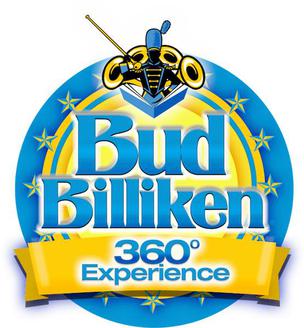
The Bud Billiken Parade and Picnic is an annual parade held since 1929 in Chicago, Illinois. The Bud Billiken Day Parade is the largest African-American parade in the United States. Held annually on the city's south side on the second Saturday in August, the parade route travels on Dr. Martin Luther King Drive through the Bronzeville and Washington Park neighborhoods. At the end of the parade, in the historic Washington public park is a picnic and festival. Robert S. Abbott, the founder and publisher of the Chicago Defender newspaper, created the fictional character of Bud Billiken, which he featured in a youth advice column in his paper. David Kellum, co-founder of the newspaper sponsored Bud Billiken Club and longtime parade coordinator suggested the parade as a celebration of African-American life.

The Jewell Building is a city landmark in North Omaha, Nebraska. Built in 1923, it is listed on the National Register of Historic Places. Located at 2221 North 24th Street, the building was home to the Dreamland Ballroom for more than 40 years, and featured performances by many touring jazz and blues legends, including Duke Ellington, Count Basie, Louis Armstrong, Dizzy Gillespie, and Lionel Hampton.
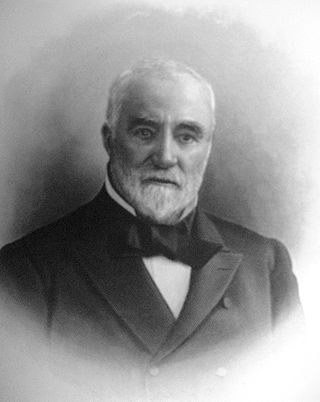
Asahel Bush was an American newspaper publisher and businessman in Salem, Oregon. As publisher of the Oregon Statesman newspaper, he moved the paper to Salem when the territorial capital moved to that city. A Massachusetts native, Bush became the first official printer for the state of Oregon, and his estate is now a city park.

Tumalo State Park is a well-developed state park in Deschutes County, Oregon, United States. Established in 1954, the park is located northwest of the city of Bend and along the Deschutes River at a site home to many bird species. The park is popular for picnics, swimming, fishing, hiking, and camping, and is open year-round.

Stage Fort Park is a park at Stage Head in Gloucester, Massachusetts, part of the Essex National Heritage Area. It contains two beaches, a large playground, picnic benches, two baseball fields, a basketball court, a dog park and plenty of room for any weekend activities. The park includes Gloucester's Visitor and Welcome Center and Stage Fort, a reconstructed Civil War fort on a site fortified since 1635.

Main Street, U.S.A. is the first "themed land" inside the main entrance of the many theme parks operated or licensed by The Walt Disney Company around the world. Main Street, U.S.A. is themed to resemble American small towns during the early 20th Century. In Tokyo Disneyland, it is called World Bazaar and covered by a glass Victorian-style conservatory roof to shield guests from the weather there. At Shanghai Disneyland, it is called Mickey Avenue and is orientated to help introduce visitors to Disney characters.
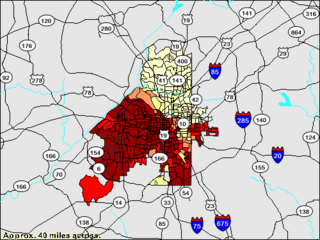
Black Atlantans form a major population group in the Atlanta metropolitan area, encompassing both those of African-American ancestry as well as those of recent Caribbean or African origin. Atlanta has long been known as a center of black entrepreneurship, higher education, political power and culture; a cradle of the Civil Rights Movement.
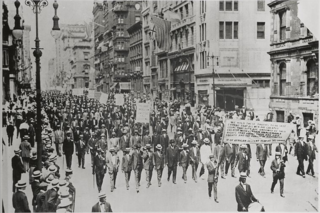
The Negro Silent Protest Parade, commonly known as the Silent Parade, was a silent march of about 10,000 African Americans along Fifth Avenue starting at 57th Street in New York City on July 28, 1917. The event was organized by the NAACP, church, and community leaders to protest violence directed towards African Americans, such as recent lynchings in Waco and Memphis. The parade was precipitated by the East St. Louis riots in May and July 1917 where at least 40 black people were killed by white mobs, in part touched off by a labor dispute where blacks were used for strike breaking.
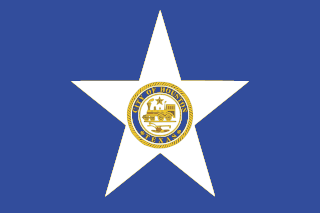
The African American population in Houston, Texas, has been a significant part of the city's community since its establishment. The Greater Houston area has the largest population of African Americans in Texas and west of the Mississippi River. Black Enterprise has referred to Houston as a Black mecca.
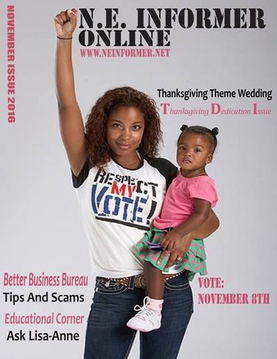
The N. E. Informer is a monthly news magazine that serves the African American community, based in Massachusetts. It was founded in 2000, but folded shortly thereafter and was relaunched in 2006 by Doreen Wade.





















